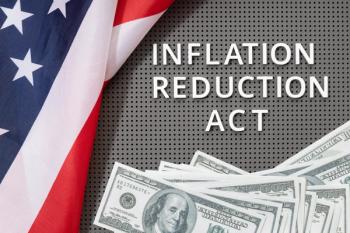
Utah seeks hybrid exchange
Utah governor hopes to gain federal certification for the state's insurance exchange, which would ideally use a hybrid exchange model.
Utah Governor Gary Herbert has been in talks since December with the Department of Health and Human Services (HHS), hoping to gain federal certification for the state’s Avenue H insurance exchange, which launched in 2009. Herbert spoke with HHS Secretary Kathleen Sebelius last week to suggest a unique hybrid exchange model.
His suggestion is that the federal government would operate the state’s individual insurance exchange, the navigator program and the tax credit functions, while Utah would maintain Avenue H as a Small Business Health Options Program (SHOP) exchange. Herbert also wants Utah to retain control of Medicaid eligibility.
“We want to see if we cannot, in fact, coexist peacefully here and provide that to the marketplace,” he said during an American Enterprise Institute event. “Clearly there are still some details to work out.”
During talks, Sebelius seemed willing to “entertain the concept,” according to Herbert, and said she would like to “find a way to get to ‘yes.’”
The bifurcated exchange market could be more attractive to health plans. For example, James Murray, COO of Humana, recently told investors that the plan will determine its exchange participation market-by-market and state-by-state because it probably won’t be able to offer its HumanaOne product without also providing small-group coverage. Picking and choosing between individual and small-business markets could make certain exchanges more attractive than the exchanges that combine the markets.
Utah’s Avenue H currently serves 320 employers with more than 7,600 employees and dependents and offers only defined-contribution plans. Contributions vary from zero dollars to $2,000 per month with an average contribution of $437. Shoppers have 135 plan products to choose from. Exchange operations are overseen by a staff of five employees with a budget of $600,000, Herbert says.
He believes the exchange model is a fit for Utah where only 45% of businesses offer health benefits. Also, residents are younger with the average age of 29.2 years, he says. But the model wouldn’t necessarily be a fit for other states.
Herbert has long been a critic of the Patient Protection and Affordable Care Act that calls for exchanges with specific features in each state, and Utah was one of 26 states named as plaintiffs in the Supreme Court challenge against the law in 2012.
“We believe in the invisible hand of marketplace finding solutions rather than the heavy hand of government,” he says.
Moving forward on health reform, he says Utah will not: force the individual mandate even though the Supreme Court has ruled it constitutional; administer Medicaid through the exchange; or administer the premium tax credit through the exchange.
“We’re now to the point, like it or not, the Affordable Care Act is law of the land, and Utah is prepared to participate in that effort,” he says. “And we believe our exchange has a role to pay in the current situation.”
Newsletter
Get the latest industry news, event updates, and more from Managed healthcare Executive.






















































